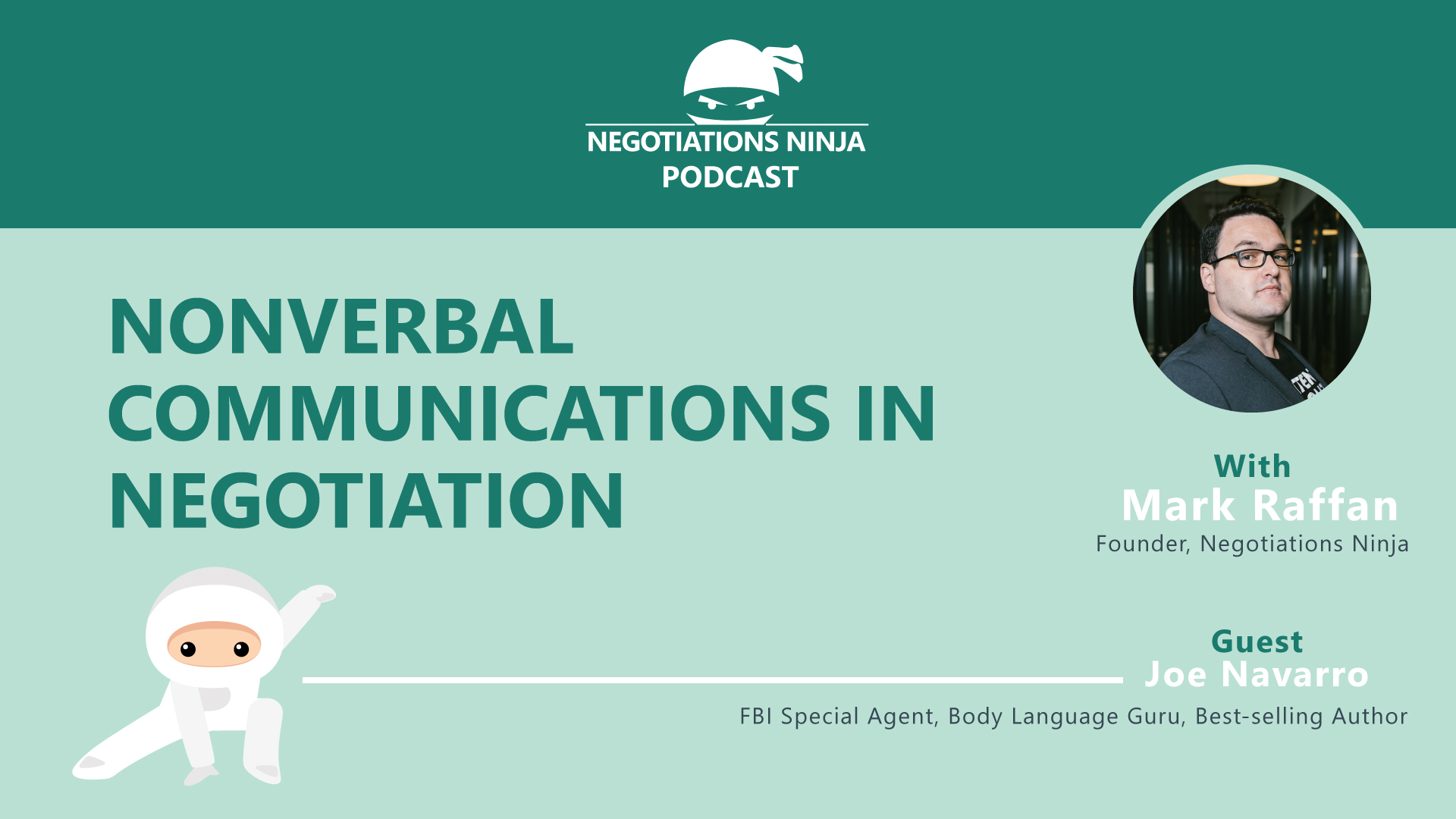Joe Navarro has spent a lifetime observing others. He spent 25 years as a Special Agent for the FBI, conducting and supervising interrogations of spies and other dangerous criminals, honing his mastery of nonverbal communication.
After retiring from the bureau, he has become a renowned public speaker and consultant, an internationally bestselling author, and a sought-after TV commentator.
Now, a decade after his groundbreaking book “What Every BODY is Saying,” Joe returns with his most ambitious work yet. “The Dictionary of Body Language” is the first-ever “field guide” to body language with more than 400 behaviors, presented in an easy-to-reference format that unveils what our bodies communicate about what we think, feel, want, desire, or fear.
In this episode of Negotiations Ninja, we talk about the power of body language and nonverbal communication in negotiations and how you can leverage nonverbal communication to get more of what you need out of your ongoing negotiations.
Outline of This Episode
- [3:47] Learn more about Joe Navarro
- [6:35] Joe’s experience with Phil Helmuth
- [10:21] Poker, body language, and business
- [13:20] The false assumptions of body language
- [18:39] How to baseline the other party’s body language
- [28:43] Body language is a universal language
- [35:05] How to project confidence in your body language
- [41:40] The Dictionary of Body Language
The false assumptions of body language
There are numerous myths about body language that are wrong. When someone crosses their arms in front of their chest it isn’t negative or blocking. In reality, it’s a self-comforting behavior that shows that you’re uncomfortable.
Looking in a certain direction while talking doesn’t mean they’re lying. Touching your nose while answering a question doesn’t mean they’re lying. Joe emphasizes that there is no single behavior that’s indicative of deception.
How to baseline the other party’s body language
World-class poker players can’t just assume that everyone’s tells are the same. You have to baseline someone’s behavior to see how they respond to certain situations before you can make an assessment. You need to do the same thing in negotiations.
The best way to baseline someone is to observe them when they don’t think they’re being observed, like when they’re getting out of the car, sitting in the lobby, walking across the room, etc.
Look for behaviors that indicate when someone is calm and unstressed. Their lips, eyes, chin, etc. look a certain way when they aren’t stressed. Then you need to observe what changes their composure.
Maybe you’re negotiating the purchase of a building and ask “Have you had any problems with termites?” You’re looking for behaviors that say “I didn’t like that question.” Does this person compress their lips? Touch their neck? Block their eyes? These are consistent with discomfort (not necessarily deception).
You have to observe the whole body whenever possible. Even when only looking at someone’s face, you have to divide it into parts. Some people’s foreheads don’t reveal much, but reveal everything from the nose down.
Joe looks at the forehead, the area between the eyes just above the nose (the glabella), the eyes, the nose, the philtrum (the area between the nose and lips), the lips, the cheeks, the jaw, and the chin.
Is every area of the face reflecting the same thing? Joe points out that some people compress their lips but the corners are down. It might mean they’re under stress. If their chin dimples at the same time, you know they’re facing tremendous stress.
How to project confidence in your body language
Everyone gets nervous. Joe gives nearly 50 presentations a year. Before he goes on stage, he’ll find a wall, spread his arms, and act like he’s pushing the wall down. It energizes him and it puts him physically and mentally in a better place. Someone else Joe knows does push-ups.
To avoid the nonverbals of lacking confidence, there are some things you can do:
- Don’t walk into a room looking down. Pull your shoulders back and look ahead.
- Don’t put your thumbs in your pockets.
- Walk in as if you have a mission to get from the door to your chair and claim your territory.
Own a commanding presence. Don’t act intimidated. If you’re invited into a room to negotiate, you have to own that room. One of the ways that you can do that is by scanning the room. Don’t hesitate. Make sure that your physical presence is large.
The Dictionary of Body Language: A Field Guide to Human Behavior
Joe’s readers asked for something practical, meaty, but easy to read. So Joe put together a small book filled with information. You can carry it anywhere. If you see a certain gesture or behavior, you can reference it in the guide. The book contains 400+ behaviors, many of which Joe had never talked about before. You can be satisfied knowing that your questions will be answered. It includes references to all of the research Joe uses when he writes his books.
Resources & People Mentioned
Connect with Joe Navarro
Connect With Mark
- Follow Negotiations Ninja on Twitter: @NegotiationPod
- Connect with Mark on LinkedIn
- Follow Negotiations Ninja on LinkedIn
- Connect on Instagram: @NegotiationPod




